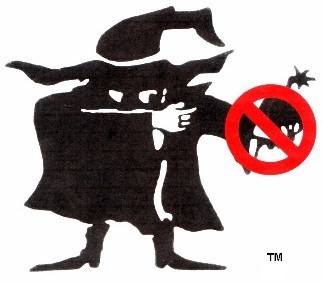Manufacturer of Bomb Detection and
Disposal Equipment specializing in
Improvised Explosive Device (IED) Detection
Manufacturer of Bomb Detection and
Disposal Equipment specializing in
Improvised Explosive Device (IED) Detection
 This story describes yet another chapter in my life. Of all my efforts I drew the most satisfaction from the design, development and manufacture of bomb detection equipment. It saved lives. As this story unfolds you will read of my thought process on how each product evolved. Wording will be selected very carefully in order not to encouragement anyone to build a bomb. To discourage that, it may interest you to know that most bomb makers blow themselves up! This story describes yet another chapter in my life. Of all my efforts I drew the most satisfaction from the design, development and manufacture of bomb detection equipment. It saved lives. As this story unfolds you will read of my thought process on how each product evolved. Wording will be selected very carefully in order not to encouragement anyone to build a bomb. To discourage that, it may interest you to know that most bomb makers blow themselves up!In the mid 60's most cities did not have dedicated bomb squads. Some of the larger cities, like New York, had people that regularly did their bomb work but that was usually secondary to their primary function.
Larry introduced me to other police officers who were doing this "double duty." Sgt. Gil Karner of the Baltimore, City Police Department and I became close friends. Gil told me about a loosely knit association of bomb technicians that was forming from Florida to California to Boston. I accepted his invitation
It was during the chapter and regional meetings that I developed many of my ideas for new products. We would discuss a recent bombing and methods to defeat it, should it happen again. By the next meeting, I usually had a new product to show. Rather than sitting around drinking beer and telling war stories we decided to add some educational fun to the meetings. At chapter and regional meetings it was mandatory that each bomb technician bring his own "inert" bomb. Obviously, no explosives were involved but to indicate that the bomb technician had failed in his or her effort to disarm the "bomb" we permitted buzzers, flashbulbs and small firecrackers to "announce" the failure. There were a LOT of failures! I absorbed all of their ideas on disarming and some were pretty unique.
Several methods of handling pipe bombs were shown. Unfortunately, some of the procedures were downright dangerous. Keep in mind that the disrupter or water cannon had yet to enter the picture. Hook and line techniques were taught at Redstone Arsenal and relayed by word of mouth to the techs.
It wasn't until we took our ideas out of the classroom and into the field that I experienced my first explosions. It seemed that members had an unending supply of explosives to do training exercises. There also seemed to be an unending supply of cars and buildings to blow up.
Usually we would strategically place a pound or two of explosives at the "seat" of the explosion in a recent bombing incident. A discussion of the bombing would follow. We would then carefully look over the car to see where various objects were located inside. Then we would back off a thousand feet or so, someone would yell "Fire in the hole!" and KABLAM! the car would fly into a jillion pieces. After any fire was put out, we returned to the car to learn every detail of the explosion. What type of explosive was it? In another exercise Tom Brodie of the Miami, Dade County, Florida bomb squad wanted to show off his new bomb containment vehicle. It consisted of a ˝-inch thick steel bowl three feet in diameter with open top, sides about three feet high and sand in the bottom all mounted on a trailer. We placed a few sticks of dynamite in the vessel as a test. It was an overcast day with the ceiling at about 1,000 feet. When the dynamite was detonated, the shock wave flew up and bounced off of the low ceiling and returned to flatten us all. At the same time, there were some crows flying by and they took a rapid trip into the unknown. The shock wave blew a hole through all of the cloud layers and you could see the pretty blue sky. We were all glad an airplane wasn't up there.
3/21 |